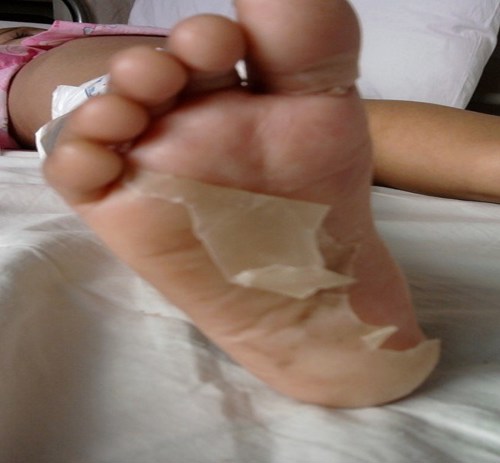Vasculitis
Vasculitis is a term to describe multisystem diseases, broadly classified by the size of involved blood vessels.
Features suggesting a vasculitis in adolescents and children:
Clinical:
- Fever, weight loss, persistent fatigue.
- Skin rash: e.g., palpable purpura, vasculitic urticaria, nodules, ulcers, mouth ulcers.
- Neurologic signs: headache, mononeuritis multiplex, focal neurological lesions (stroke).
- Arthritis or arthralgia, myalgia or myositis.
- Hypertension, cardiac failure, unequal pulses.
- Testicular pain.
- Oliguria, haematuria, oedema.
- Pulmonary infiltrates or haemorrhage.
Laboratory:
- Increased acute-phase reactants (ESR, CRP).
- Anaemia, raised white cell count, raised eosinophil count.
- Autoantibodies (e.g., antinuclear antibody, Antineutrophil cytoplasmic antibodies).
- Abnormal urinalysis (blood and protein in urine).
The most common childhood vasculitides are Henoch – Schönlein Purpura (HSP) and Kawasaki Disease (KD)
Henoch Schönlein Purpura (HSP) - is very common and characterized by palpable purpura (i.e., raised spots) over extensor surfaces (typically the legs and buttocks), abdominal pain (can be with melaena), renal involvement (haematuria) and lower limb joint pain and often arthritis (ankles and knees).
Most children recover completely within 4 weeks but recurrences can occur and renal involvement can progress to renal failure. NSAIDS are helpful for the joint pain and corticosteroids may be used when there are gastrointestinal symptoms although there is little evidence that steroids alter the disease course or prevent severe renal disease.
HSP arthritis is predominantly a large joint arthritis involving knees, ankles, however other joints such as wrists, elbows and small joints of fingers can also be involved. Affected joints have painful ranges of movement due to periarticular swelling but the characteristic findings of warmth, erythema and effusion are often absent. Joint disease in HSP is transient and resolves within few days to weeks without any residual damage. Articular features may reappear for few weeks and subside. NSAIDs may be used.
Kawasaki disease (KD) - tends to affect young children (under 5 years) with potential to develop aneurysms of coronary and other blood vessels with severe long term morbidity and mortality. Prompt diagnosis, early treatment with intravenous immunoglobulin and high dose aspirin, markedly reduce the risk of developing coronary aneurysms.
The characteristic features of KD include fever > 5 days, red palms and soles with characteristic skin peeling after 10-14 days (photograph below), widespread rash, bilateral (non-purulent) conjunctivitis, red lips, tongue and oral cavity with infected throat, cervical lymphadenopathy. Reactivation of BCG at the site of the skin inoculation is a characteristic feature observed in KD and can be helpful in the differential diagnosis.
The photograph below shows characteristic skin peeling after 10-14 days.


